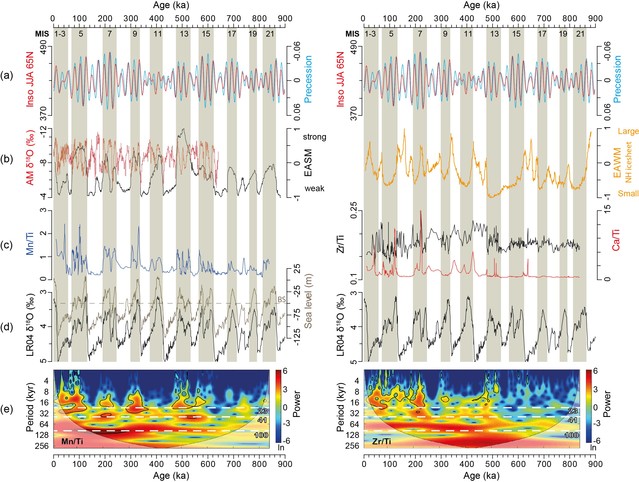Wenshen Xiao1, 2*, Leonid Polyak3, Rujian Wang1, 2, Ludvig Löwemark4, Jing Mei1, Defang You1, Weiguo Wang5, Li Wu1, Xiaobo Jin1
1 State key laboratory of Marine Geology, Tongji University, Shanghai, 200092, China
2 University Corporation for Polar Research, Beijing, 100875, China
3 Byrd Polar and Climate Research Center, The Ohio State University, Columbus, OH 43210, USA
4 Department of Geosciences, National Taiwan University, P.O. Box 13-318, 106 Taipei, Taiwan
5 Third Institute of Oceanography, SOA, Xiamen, 361005, China
Abstract
Three sediment cores from the Makarov Basin and Mendeleev Ridge off the Siberian margin were analyzed for a number of litho-, bio- and magnetostratigraphic proxies. Correlation to previously studied Arctic records from Mendeleev to Lomonosov ridges enables paleoceanographic reconstructions for the Middle to Late Pleistocene (estimated ~0.8 Ma) on orbital time scales. Cyclic changes in lithology corroborated by multiple stratigraphic constraints were tuned to global climate variations based on the manganese content that increases during interglacials, while calcium and zircon were used as proxies for the Laurentide and Eurasian ice sheet inputs. The combined evaluation of glacial and interglacial proxy variabilities provides a coherent picture of the western Arctic Ocean development in the Pleistocene. We suggest that major cyclic changes were driven by summer processes, such as sea-ice retreat and enhanced biological production vs. suppressed ice melt in warmer and colder summers, respectively. A potential link to low latitudes via atmospheric moisture and heat transport is indicated by similarities in the western Arctic Ocean and East Asian monsoon records. Long-term cooling is signified by biogenic proxies related to sea-ice expansion over the western Arctic Ocean with step changes at MIS 11 and 7 (~0.4 and 0.2-0.3 Ma). This transition also features better fossil preservation indicating less corrosive/oxidative bottom waters, probably resulting from a decrease in organic export production and/or weakening of bottom water ventilation under perennial sea ice. The latter was possibly enhanced by atmospheric cooling and increased meltwater fluxes with the growth of circum-Arctic ice sheets.
Full Article:https://doi.org/10.1016/j.quascirev.2019.106105



